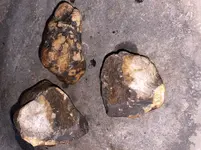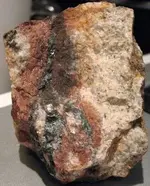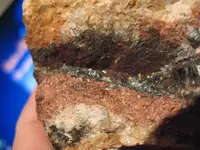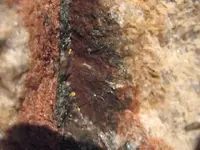Boarteats
Full Member
- Joined
- Mar 25, 2018
- Messages
- 134
- Reaction score
- 137
- Golden Thread
- 0
- Location
- Near Baltimore
- Detector(s) used
- Falcon MD20
- Primary Interest:
- Prospecting
Apologies in advance for the “what is this” question. I’ve gotten pretty good at identifying rocks and minerals in my area, but I’ve not seen this before. Any thought on what the dark mineralized areas are. My best guess was a telluride. I believe that the host rocks are feldspar.
I’ve started to find mineralization like this in an area where I’ve found a pretty good amount of silver (in the form of silver chloride) and am starting to find some really fine gold (only a very small amount so far). Gold is getting better as I dig down. These rocks came from a layer of very densely packed gravel and rock a few feet below stream bed (not hard pack). I originally believed that these rocks simply had been covered with manganese dioxide. However, breaking some of them revealed that the mineralization is inside as well, quite a lot of it.

I’ve started to find mineralization like this in an area where I’ve found a pretty good amount of silver (in the form of silver chloride) and am starting to find some really fine gold (only a very small amount so far). Gold is getting better as I dig down. These rocks came from a layer of very densely packed gravel and rock a few feet below stream bed (not hard pack). I originally believed that these rocks simply had been covered with manganese dioxide. However, breaking some of them revealed that the mineralization is inside as well, quite a lot of it.

Last edited:
Upvote
0







